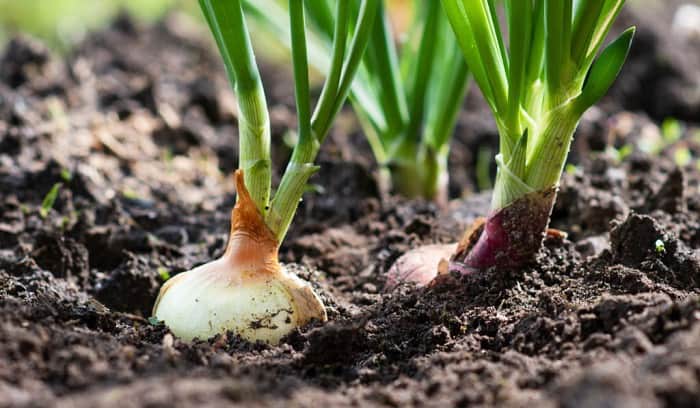Understanding Onion Growing Seasons
When can you plant onions? The answer depends on the type of onion you intend to grow and your geographical location. Onions are categorized into two main types based on their day length requirements: short-day onions and long-day onions. Short-day onions need fewer hours of daylight to initiate bulbing, typically around 10-12 hours, making them suitable for planting in the fall or early winter in the southern United States. In contrast, long-day onions require 14-16 hours of daylight to bulb and are typically planted in the spring in the northern United States.
Ideal Time to Plant Onions in Spring
When can you plant onions in the spring? Generally, the ideal time to plant onions in the spring is when the soil temperature consistently reaches 50-65°F (10-18°C) and the danger of frost has passed. This timeframe varies depending on your location. In the northern United States, planting typically occurs in late March to early April, while in the southern United States, planting might start as early as January or February. To determine the best planting time in your region, consult local gardening resources and agricultural extensions for precise recommendations.
Autumn Onion Planting: Is It Viable?
When can you plant onions in the fall? Autumn planting is an option for some gardeners, particularly in regions with mild winters. Planting onion sets in the fall allows them to establish roots before the ground freezes, giving them a head start in the spring. However, this approach has its drawbacks. Autumn-planted onions are more susceptible to bolting, or prematurely flowering, due to temperature fluctuations. Bolting can negatively affect bulb size and overall yield. If you choose to plant onions in the fall, protect them from extreme temperatures and ensure the soil remains moist but not waterlogged.
How to Prepare Soil for Onion Planting
When can you plant onions with the best results? Preparing the soil properly is crucial for optimal onion growth. Onions prefer well-draining, loose soil with a pH between 6.0 and 7.0. To achieve this, mix organic matter such as compost or well-rotted manure into the soil before planting. Avoid using fresh manure, as it can cause excessive nitrogen levels and negatively impact onion growth. Additionally, ensure the soil is free from stones and other debris that may hinder root development. Proper fertilization is also essential; consider using a balanced fertilizer with equal parts nitrogen, phosphorus, and potassium. This will provide the necessary nutrients for strong onion bulbs and healthy foliage.
How to Plant Onion Sets and Seeds
When can you plant onions to ensure a successful harvest? Planting onion sets and seeds requires careful attention to detail. Choose either onion sets, which are small, immature onion bulbs, or seeds, depending on your preference and local availability. To plant onion sets, create furrows in the soil approximately 1 inch deep, spaced 4-6 inches apart. Place the sets in the furrows, ensuring the root end is down, and cover them with soil. For onion seeds, sow them 1/2 to 1 inch deep, about 1 inch apart, and thin them to 4-6 inches once they reach 2-3 inches tall. Water the area gently after planting, keeping the soil consistently moist but not waterlogged.
Caring for Onion Plants: From Planting to Harvest
When can you plant onions and ensure their proper care throughout the growing season? After planting, maintaining onion plants requires consistent care. Water the onions regularly, providing about 1 inch of water per week, including rainfall. Avoid overwatering, as this can lead to rot and disease. Weed the onion bed frequently, as onions have shallow roots and can be easily outcompeted by weeds. Applying mulch can help suppress weeds and maintain soil moisture. Monitor for pests, such as thrips and onion maggots, and use organic or chemical controls if necessary. Proper care throughout the growing season will result in healthy, robust onions ready for harvest.
Harvesting and Storing Onions
When can you plant onions that will yield a bountiful harvest? Knowing when to harvest onions is crucial for optimal storage and longevity. Harvest onions when the tops begin to yellow and fall over, typically in late summer or early fall. Carefully lift the bulbs from the soil, and allow them to dry in a warm, well-ventilated area for a few days. Once the onion skins are dry and papery, trim the roots and tops, leaving about 1 inch of stem. Store the onions in a cool, dark, dry location with good air circulation, such as a mesh bag or a wire basket. Properly harvested and stored onions can last for several months, providing a steady supply of fresh onions for your culinary creations.
Troubleshooting Common Onion Growing Issues
When can you plant onions that will thrive and yield a healthy harvest? Despite proper care, onion growers may face common challenges, such as bolting, disease, and poor yield. Bolting, or premature flowering, can be triggered by temperature fluctuations or stress. To prevent bolting, ensure consistent moisture levels, avoid fertilizing with high-nitrogen products, and choose appropriate onion varieties for your region. Diseases, such as downy mildew and pink root, can affect onion growth. Prevent diseases by practicing crop rotation, using disease-resistant varieties, and applying fungicides when necessary. Poor yield can be caused by inadequate soil preparation, improper planting, or pests. Address these issues by following best practices for soil preparation, planting, and pest control.


/growing-onions-1403447-01-38d480a2d16d4ea0b0dd174f42785e1d.jpg)






